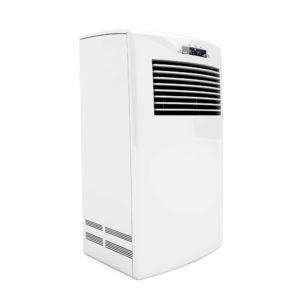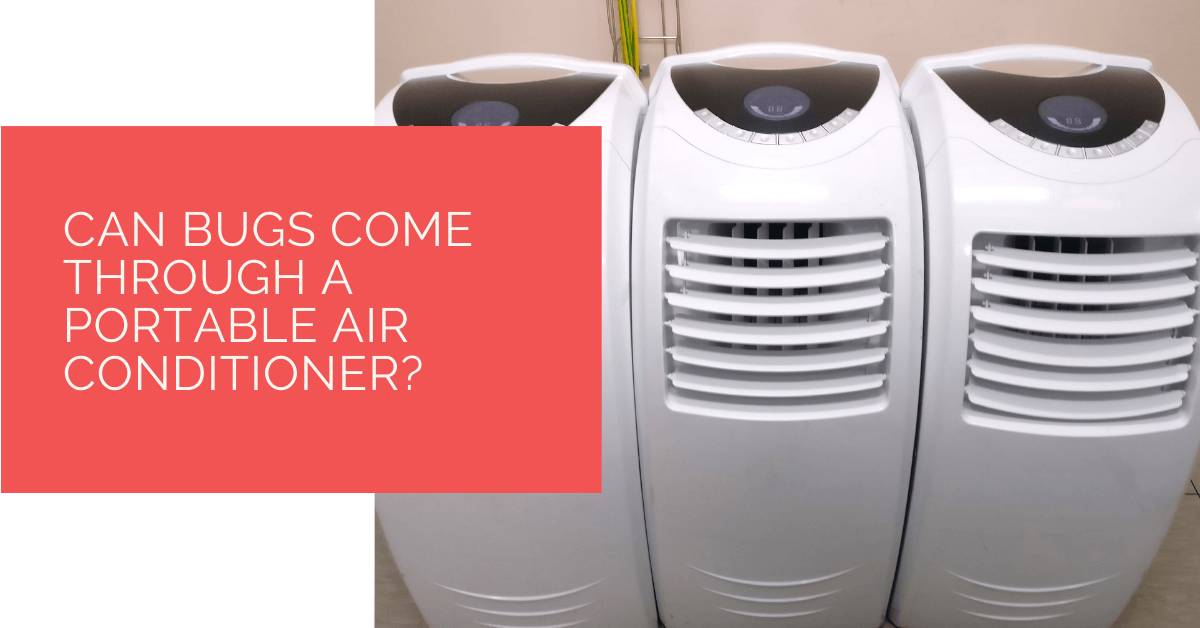The bug problem is a big menace for almost all homes. Whether it is window ac or portable units air conditioning, bugs can come through them to get into a warm place. Cooler air does attract bugs and other flying pests. In fact, light also plays a vital role.
Most bugs crawl through the small spaces or tiny cracks between all the edges of vents, the AC unit, and the window air.
Even the smallest of cracks cannot prevent bugs from coming into your abode through air conditioning. Moreover, not just bugs, you might even spot spiders and mosquitoes entering through your window unit. Well, no worries, as we are here to help!
This article will go deep into this bugs and pest problem and the best ways to prevent bugs from coming through the portable and window air conditioner. Read on and get informed!
Contents
Key Takeaways
- Bugs, including spiders, mosquitoes, and bed bugs, can enter your home through a window and portable air conditioning units due to small cracks and openings.
- To prevent bugs from infiltrating your living space through air conditioners, you can use methods like sealing cracks with duct tape or caulk, applying a window screen, using cardboard or paper towels, or relocating the unit to a bug-free area.
- Choosing the most suitable bug-proofing method based on your specific air conditioner unit and requirements is important to keep pests out effectively.
Can bugs travel through air vents?
Yes, bed bugs crawl and can travel in your air vents. Thankfully, these bed bugs don’t have any wings, so due to a few reasons, they cannot jump or fly through the air conditioner.
You can see a bug infestation in your air vent with small bugs nesting near it. They even use the air conditioner ducts as a temporary cover and avail themselves of cooler air.
How to stop Bugs coming in from the air conditioner?
While there are several ways to prevent bugs from coming and getting trapped inside air conditioner window units, some of these methods have been relatively successful in this issue. Let’s quickly go through these!
Psst… not every method will suit your air conditioner, so check your ac unit requirements and find what works best for you.
Using a duct tape
Duct tapes solve most of the problems. Most Ac units are no different.
 You should spend money on duct tapes to seal any visible cracks or small holes around the window and the unit that provides easy bugs access. If you see some hairline crevices, duct tape is a comfortable and easy option to avoid bugs crawling in the room. It is also pretty cheap and fast at covering window air conditioners.
You should spend money on duct tapes to seal any visible cracks or small holes around the window and the unit that provides easy bugs access. If you see some hairline crevices, duct tape is a comfortable and easy option to avoid bugs crawling in the room. It is also pretty cheap and fast at covering window air conditioners.
But, do remember that duct tape will not fit gaps surrounding the unit that are more than one inch wide. So, all in all, duct tape works best for minor cracks to stop bugs.
For larger cracks, you might need to opt for extreme measures. It would be best if you remembered that duct tape isn’t the best for holding the insulation in your air conditioning unit. In such a situation, you might end up running the AC or heating it, which will cost you a lot more pounds on the bill.
Caulk up those gaps
Caulk is a pretty great option to have a bug-proof room. Caulks come in various types. You can use the basic cheap caulk and an applicator to hold the seal.
It is recommended that you buy a caulk that is safe to use on wood and can be utilized for basic sealing of air conditioners system. This will help to remove the caulk from the air conditioning over time.
You can find various grades of caulk, so it is best to research correctly according to your air conditioner or even discuss with an associate to receive help at a hardware store. Just try to look for an option that is removable and moldable.
Rope caulk
Rope Caulk is a great fit to make your ac units bug proof. It can be sticky but is easily moldable like the Play-dough, and you can seal up the cracks.
For low prices, Rope Caulk will be available in most air conditioner hardware stores. It is best suited for the gaps between the ac and the cracks above or below the unit on the top window and the windowsill.
Duct Tape Vs. Caulk
It would help to use duct tape for those gaps that accordion flaps cannot seal. This will make it easier to remove in the coming time and to adjust those accordion panels. Sealing up with caulk and then changing can be a huge issue.
Duct tape is an easy and convenient option for horizontal panels. Additionally, most AC units consist of extenders that fit flush in the window frame to prevent bugs from coming in. You should seal the edges wholly with the help of duct tape so that it is safe against those flying pests and spiders.
Remember that no seal is entirely airtight in air conditioner units.
Put a window Screening to use
Apart from a caulk or duct tape, you can use a window screening on the outer side of the Air conditioner to prevent bugs from coming.
 This screen material covers the entire window to block any spiders, mosquitoes or flying bugs to enter the room. Even if the window air conditioner does not fit flush against the window, this is possible.
This screen material covers the entire window to block any spiders, mosquitoes or flying bugs to enter the room. Even if the window air conditioner does not fit flush against the window, this is possible.
While the screening approach works pretty well, you must ensure that it is installed properly. If it is not installed correctly with the air conditioner, there will be gaps that common bugs and creepy crawlies might enter through.
If the window air conditioner hangs on the outer side, you should use an additional screening to avoid bugs.
Use Cardboard
Cardboard can be used if the air conditioner unit uses accordion flaps. You can conveniently cut the cardboard to seal every single hole in the window ac unit.
You can even tape this cardboard around the open window. You should ensure that all the cracks and edges are covered, otherwise many bugs will enter through, and your air conditioner will not be pest-proof.
Even though there is a lot of hard work in this process, many people opt for the low price.
Using thick paper towels
Another method to prevent bugs is to fold up a paper towel into proper rolls and stuff them in the cracks around the air conditioner unit. The gaps on the sides and top can be adequately filled with thick paper towels. You can also use duct tape to secure these multiple paper towels.
Use a different room
Moving the portal unit to another room or window with no small cracks or crevices is always possible.
You should completely block this new room from the previous air conditioner. You can even add bug light straps or traps, citronella candles in the room to keep bugs away from the HVAC system.
Heat Pump Source: Reliable Heating and Cooling Solutions
At Heat Pump Source, we take pride in our unwavering commitment to serving the UK with top-tier HVAC solutions. From the efficiency of heat pumps and the cool relief of air conditioning to the warmth of boilers, radiators, and underfloor heating, our dedicated team is always at the forefront of innovation. We understand the unique needs of every household and business, and we strive to provide dependable health and cooling products and services that are tailored just for you. Ensuring your comfort and satisfaction is our utmost priority. Whether you have questions, need guidance, or require support, we’re always here to assist. Please don’t hesitate to contact us; we’re eager to be of service.
Wrapping Up
Well, this brings us to an end to the article. Yes, bugs can enter both your window and portable air conditioning unit.
With the specific steps mentioned here, you will be able to bug-proof the window ac unit and solve the pest and bugs problem inside or through the air conditioners.
About the Author
At Heat Pump Source, our articles are the product of a collaborative effort among a team of highly skilled HVAC experts. Our dedicated professionals, hailing from diverse backgrounds in heating, ventilation, air conditioning, and refrigeration, contribute their extensive knowledge and experience to every piece of content. This multidisciplinary approach ensures comprehensive coverage. Our commitment is to deliver authoritative, reliable, and tailored advice to meet the unique needs of every household and business across the UK.

